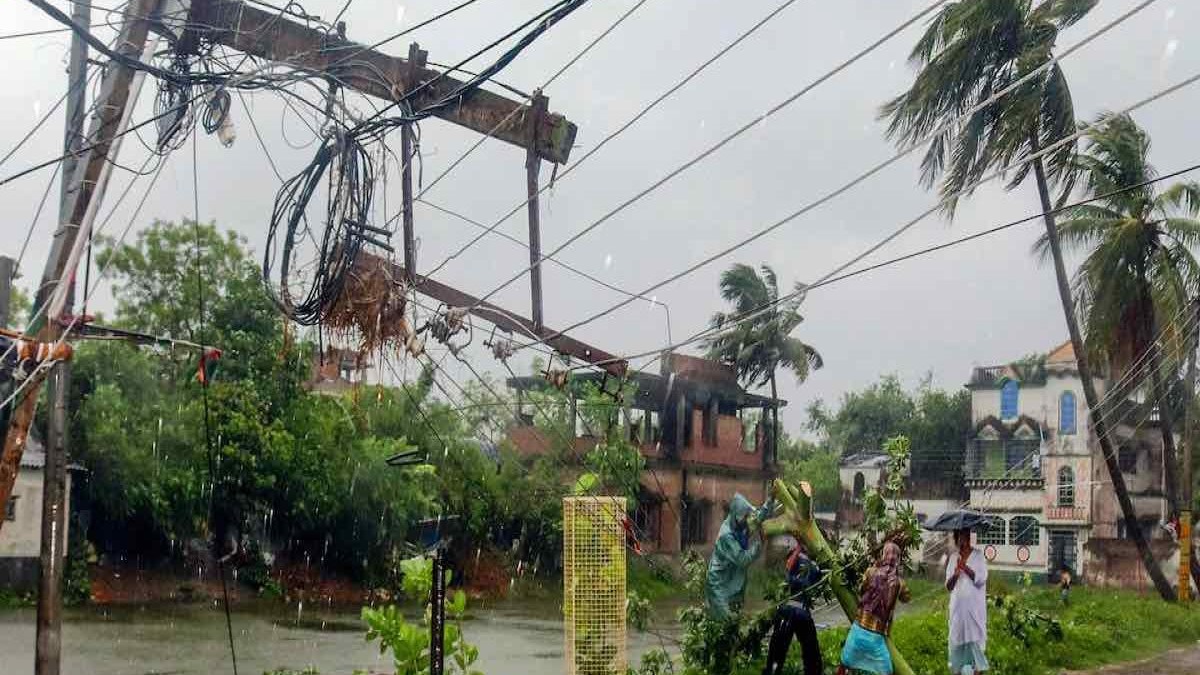Close to 100 people have died due to Cyclone Amphan which hit the eastern part of India and Bangladesh on Wednesday. The west Indian State of West Bengal has recorded 85 deaths and Bangladesh has recorded over 15 deaths. The Indian State of Odisha was also badly affected.
The West Bengal state government estimated the damage to be upwards of 1 trillion rupees or close to 14.4 billion US dollars. Neighboring Bangladesh also suffered extensive damage, with the preliminary estimates by the government indicating it could go up to 1.5 billion US dollars.
In India, protests broke out in Kolkata, the capital of the State of West Bengal, over the administration’s failure to restore normalcy even after three days. With life thrown out of gear, the authorities scrambled in various parts of the state to restore normalcy.
According to authorities in West Bengal, hundreds of thousands of people were rendered homeless as the cyclone flattened houses, uprooted thousands of trees and swamped low-lying areas.
According to official sources, around 15 million people of the state have been directly affected and more than 1million houses destroyed due to the cyclone in West Bengal. In Bangladesh, residents of 26 districts have been affected, said State Minister for Disaster Management, Enamur Rahman, according to the Dhaka Tribune.
The newspaper reported that 1,100 kilometers of roads, and 200 bridges and culverts were damaged.
“The Water Development Board reported that 150 kilometers of embankments were seriously damaged while another 84 dams developed cracks,” state minister was quoted by the newspaper as saying.
Several roads and houses in Kolkata, Howrah, and North and South 24 Parganas districts in India continue to remain waterlogged. People in various parts of Kolkata staged protests and blockades since Friday night demanding immediate resumption of power and water supply.
Firhad Hakim, chairman of the Kolkata Municipal Corporation board of administrators, assured people that normalcy would be restored in a week.
In Kakdwip area of South 24 Parganas district of West Bengal, people complained that they were not given enough tarpaulin sheets to cover the roofs of houses damaged by the cyclone. In the Hingalganj block of North 24 Parganas district, people claimed they were running out of food, as shops in the vicinity were yet to lift shutters in the aftermath of the calamity.
Prime minister Narendra Modi flew down to Kolkata on Friday and undertook an aerial survey of the cyclone-hit areas along with chief minister Mamata Banerjee. He announced a $132 million relief package for the victims.
Impact on Sunderbans Delta
Especially severe was the impact on the ecologically sensitive Sundeabans delta. The region has not yet properly recovered from the cyclones ‘Aila’ and ‘Bulbul’ which had claimed more than 300 lives in Bengal and Bangladesh in May 2009 and November 2019, respectively. The houses that had been damaged in November 2019 had still not been repaired when Amphan once again uprooted the people of Sunderbans from their homes. Tens of thousands of homes have been destroyed in the wake of the cyclone.
Mud embankments and dams in the Sundarbans delta, a UNESCO site, were breached as the surge whipped up by the cyclone submerged several kilometers of the islands. With sea water entering agricultural land, the government officials now fear more than 200,000 farmers will be severely affected. The agrarian economy of Sundarbans is mainly based on rice farming on fallow land throughout the year.
West Bengal’s Sundarbans Affairs Minister Manturam Pakhira told the media that nearly 17,800 hectares of agricultural lands may have been damaged because of saline water from seas entering the farms.
Amiya Patra, vice-president of All India Agricultural Workers Union, said that embankments at several places have been damaged and farms are flooded with saline water. “Our experience from Cyclone Aila in 2009 made it clear that desalinating the farms will be a daunting task,” he said. West Bengal produces 146 lakh tonnes of rice per year. The cyclone has laid waste to much of the produce from this year.
Fuad Halim, General Secretary of the People’s Relief Committee in Kolkata, told NewsClick, said that the staff at hospitals is stranded as they cannot reach home after discharging theiir duty and that the other staff cannot reach work. “Similarly, the injured or sick persons cannot avail emergency services,” he said. Halim emphasized on the need for immediate monetary help and food stock from the Centre. “The Bharatiya Janata Party-led Centre should declare it a national disaster and release the disaster relief fund. The first lot of money should be dispatched after preliminary assessment after 2 days and the other on a later date after ascertaining the exact extent of damage,” he added.
(With inputs from Newsclick and the Press Trust of India)





